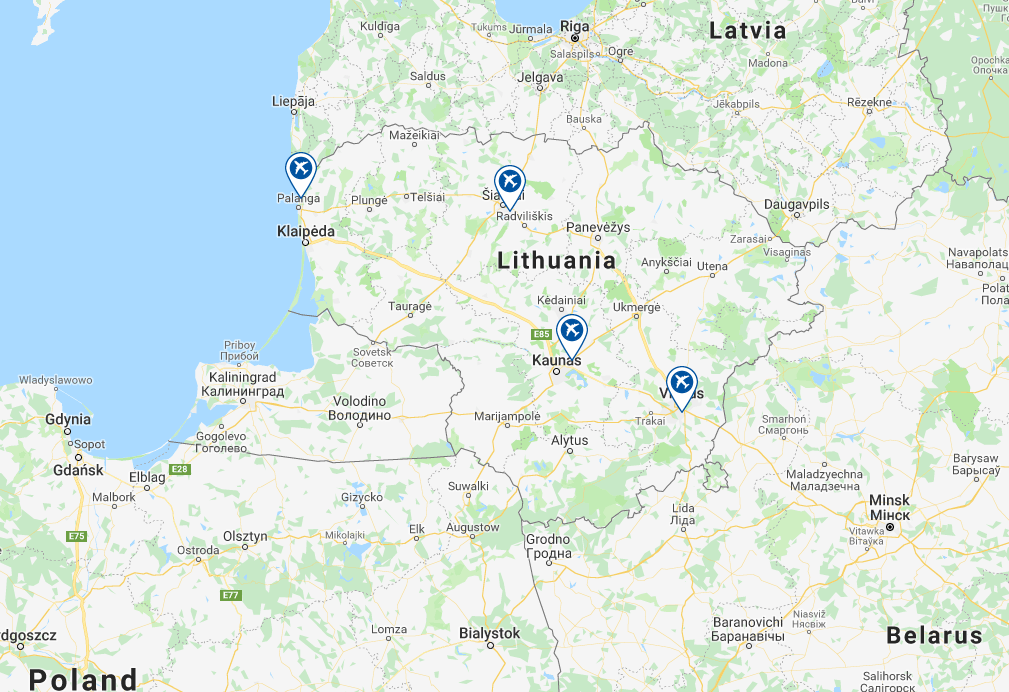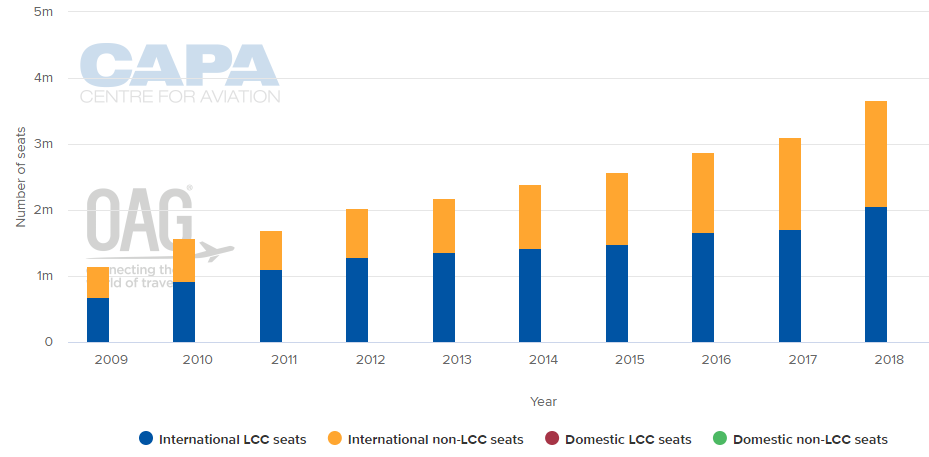Summary:
- Lithuania may build a new airport for Vilnius and Kaunas by 2035 with passenger traffic building steadily at the cities' existing airports;
- The Lithuanian population continues to fall but the country is at the start of its tourism journey and consideration must be given to the expected traffic mix 15 years in the future;
- New high-speed rail infrastructure with frequent services would be needed to support such a proposal.
"If this large growth in passenger flows continues, we will have no choice as we will need a new airport,". says Mr Masiulis with a decision on construction expected to be made in 2022, with the airport potentially completed by 2035.
To what degree Poland's decision on a new 'central' airport has influenced the Lithuanians is unclear. Apart from Russia, Poland is the leading power in the region and Lithuania once formed a Commonwealth with Poland. (It has also been part of both the Soviet Union and the Russian Empire). So it is likely at least to pay attention to aviation developments in its south-western neighbour.
MAP - Vilnius and Kaunus are less than 100km apart so the idea of a new central airport to serve both cities is a sensible development Source: CAPA - Centre for Aviation
Source: CAPA - Centre for Aviation
While Vilnius is the capital and largest city, Kaunas is an important second city. In fact the population of its 'metropolitan area' is not that dissimilar to that of Vilnius and it is regarded as being the historical centre of Lithuanian economic, academic, and cultural life. The two cities are less than 100km apart so a centrally located airport might be around 45km from the centre of each. They are connected by rail (1 hour 10 minutes journey time) and road (E85 highway).
Both their airports, together with the one at Palanga on the Baltic Sea coast, are owned and operated by the state entity SE Lithuanian Airports since 2014. A concession agreement was formulated in 2016 which is said to have attracted the attention of Fraport, Manchester Airport Group, Vinci Airports, Avialliance, Egis Group and Ferrovial but which has not yet led to a completed deal and the new airport project has emerged as an alternative to concessions on the existing ones.
Vilnius is the busier of the two airports with 4.9 million passengers in 2018 compared to just over one million at Kaunas. Kaunas is growing faster this year to date and experienced its busiest-ever month in May-2019, exceeding 100,000 passengers for the first time. Comparing the airline business models at each, while Vilnius has a better mix of full-service and low-cost airlines (albeit oriented towards the latter) Ryanair is pre-eminent at Kaunas, with two thirds of seat capacity.
Kaunas has a predilection towards West European services (87.6% capacity) while Vilnius offers a larger balance of East European flights, in keeping with its status as one of the most economically important centres in the Baltic States. In both cases the United Kingdom is the leading destination and in Kaunas' case by almost three times the second-placed destination. That is partly explained by the level of emigration to the UK since Lithuania joined the EU in 2004 which has actually depopulated the country from a high of 3.7 million in 1990 to 2.8 million now.
CHART - Low Cost Carriers have played an important role in the development of scheduled aviation in Lithuania Source: CAPA - Centre for Aviation and OAG
Source: CAPA - Centre for Aviation and OAG
A new airport may well be justified, and possibly before 2035. A possible site could be at Elektrėnai, roughly half way between the two cities, on the border of the Vilnius and Kaunas counties, on the E85 highway and close to the existing rail line.
But that rail line is inadequate. A new high-speed line, Rail Baltica, should open by 2026, connecting many Baltic States and also Warsaw, Poland, with up to 14 trains each day on the section between Vilnius and Kaunas. Even then, a dedicated, frequent airport rail service from both cities would be needed.
Lithuanian Airports also needs to consider the configuration of the new airport, well in advance of its opening date. Statistics show that international LCC seat capacity fell from 65.8% in 2011 to 56.4% in 2018. If that trend continues a hybrid terminal may be required rather than separate full-service/network and low-cost terminals, bearing in mind also that Lithuania does not have, and might well never have again, a flag carrier airline of its own.